Physical Address
304 North Cardinal St.
Dorchester Center, MA 02124
The upper ribs are commonly bifid, splayed, fused, or hypoplastic ▸ they are occasionally associated with syndromes (e.g. basal cell naevus syndrome) or other anomalies (e.g. Sprengel's deformity)
Cervical rib: this arises from C7 (affecting 1–2% of the population) and consists of an initially downward sloping rib just lateral to the spine (cf. an initially upward sloping normal rib) ▸ it can cause a thoracic outlet syndrome and is often bilateral and asymmetrical
Post fracture this can mimic an intrapulmonary opacity
This is due to external pressure on a rib (e.g. coarctation of the aorta, neurofibromatosis type I (NF2))
These are infrequent ▸ they are most commonly cartilaginous tumours (e.g. a chondroma or osteochondroma) ▸ they are predominantly found in an anterior location and may show characteristic cartilaginous calcification
Fibrous dysplasia ▸ histiocytosis X ▸ haemangioma ▸ aneurysmal bone cyst
These are most commonly an osteomyelitis or a neoplastic disease
Malignant rib tumours: these are commonly metastatic deposits or myeloma ▸ primary malignant tumours are rare (but usually a chondrosarcoma)
Osteomyelitis: this is uncommon ▸ it may be due to haematogenous spread (e.g. staphylococcal or tuberculous), or it may be caused by direct spread from the lung or pleural space (e.g. actinomycosis)
These can spread from the lung to a rib ▸ MRI can determine the extent of a Pancoast's tumour (and assess the relationship between the tumour and the plexus brachialis)
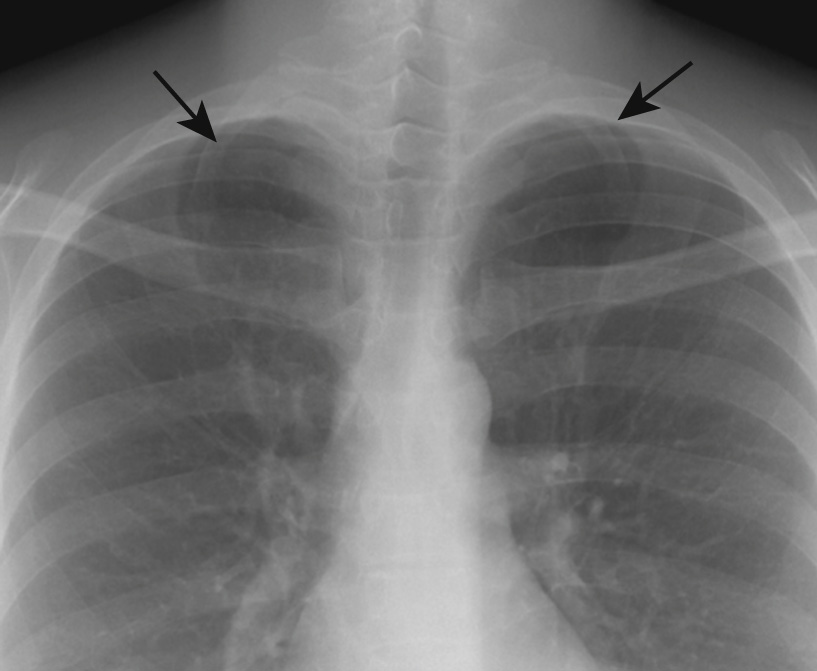
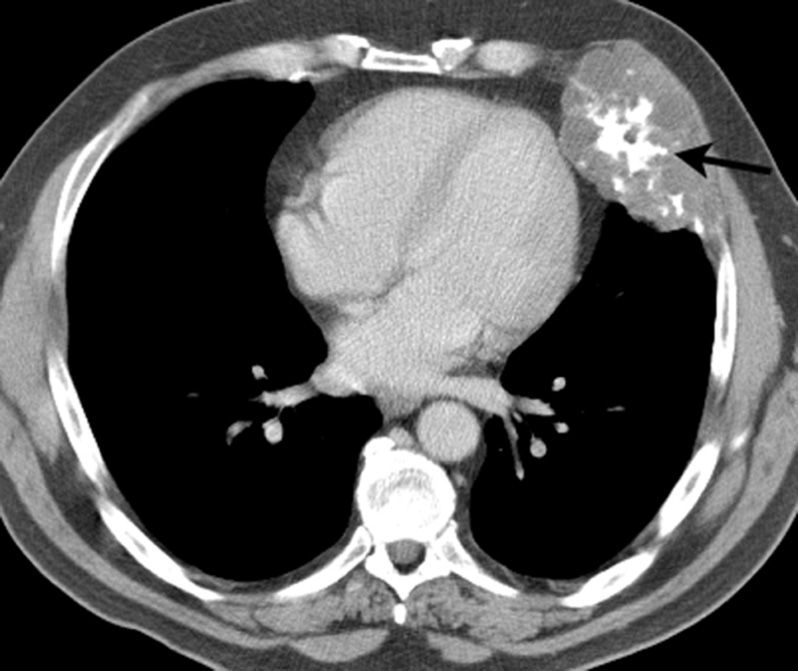
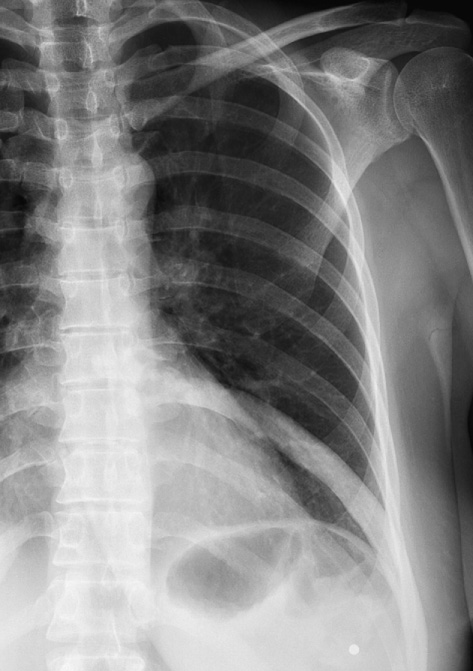
| Inferior rib notching | Arterial: Coarctation of the aorta, aortic thrombosis, subclavian obstruction, any cause of pulmonary oligaemia Venous: Superior vena cava obstruction Arteriovenous: Pulmonary arteriovenous malformation, chest wall arterial malformation Neurogenic: Neurofibromatosis (ribbon ribs) |
| Superior rib notching | Connective tissue diseases: Rheumatoid arthritis, SLE, Sjögren's, scleroderma Metabolic: Hyperparathyroidism Miscellaneous: Neurofibromatosis, restrictive lung disease, poliomyelitis, Marfan's syndrome, osteogenesis imperfecta, progeria |
Together with the spine the medial clavicular heads can assess rotation ▸ the joints at both ends are synovial and may be eroded in any synovitis appearing more ill defined (e.g. rheumatoid arthritis, hyperparathyroidism)
Neoplasms of the clavicle are usually malignant (myeloma or metastatic)
Other primary tumours/tumour-like conditions:
Osteosarcoma ▸ Ewing's sarcoma ▸ post radiation sarcoma ▸ aneurysmal bone cyst ▸ histiocytosis X ▸ intersternocostoclavicular hyperostosis
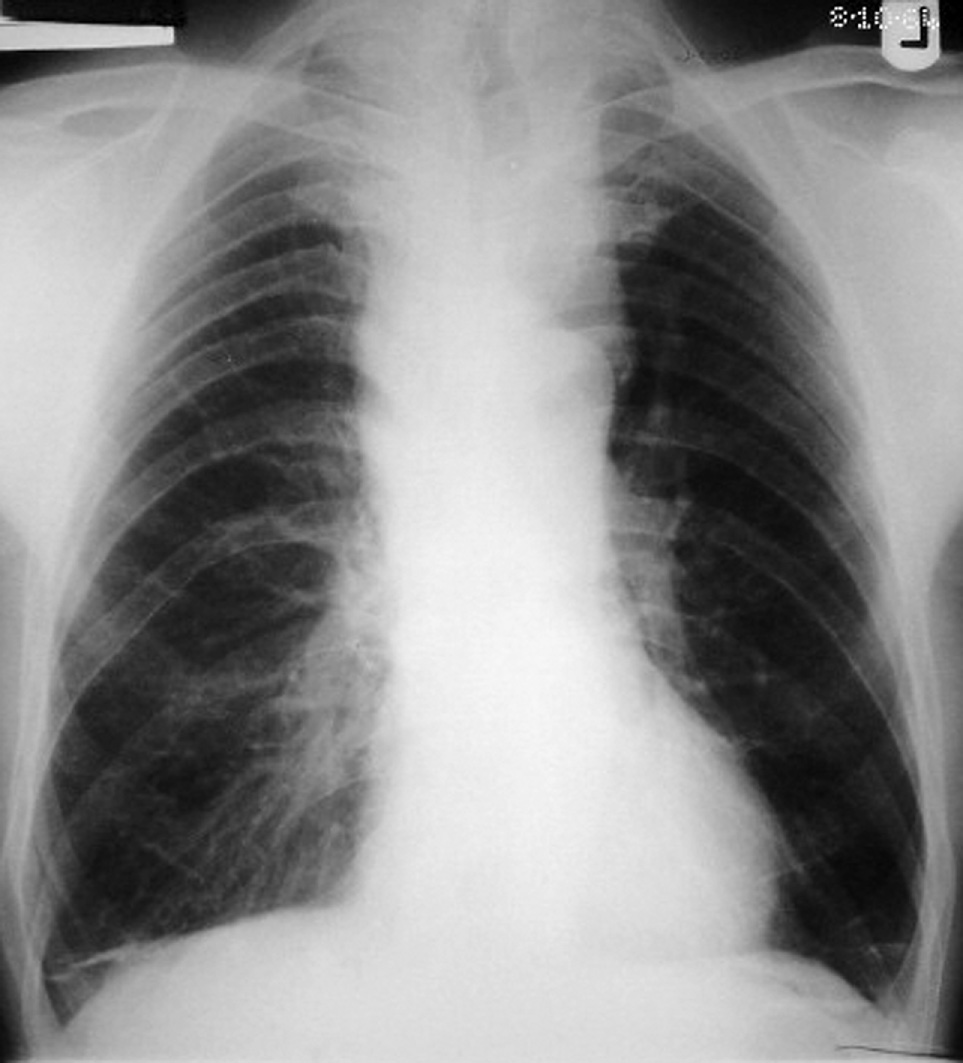
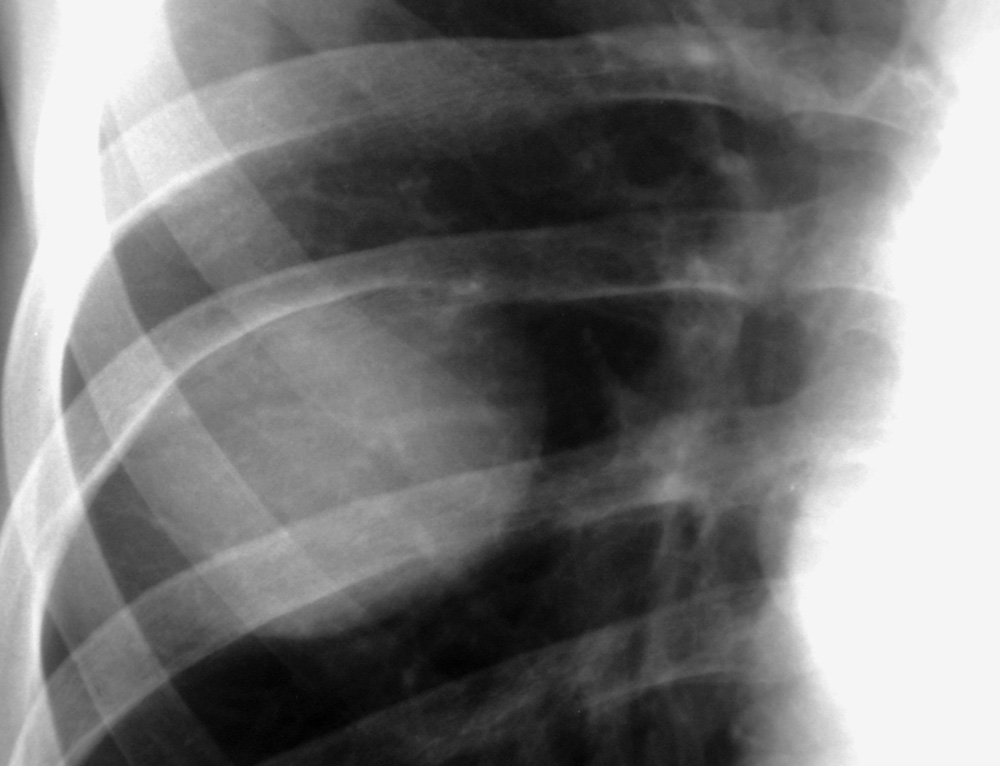
An autosomal condition where there is unilateral absence or hypoplasia of the pectoralis major muscle ▸ it is accompanied by ipsilateral hand and arm anomalies (particularly syndactyly), rib anomalies and hypoplasia of the breast and nipple
Unilateral lung transradiancy and an abnormal anterior axillary fold
The most common benign chest wall tumour
A low-density well-demarcated homogeneous mass (−90 to −150HU) ▸ soft tissue components suggest a liposarcoma
T1WI: high SI ▸ T2WI: intermediate SI (and low SI with fat suppression)
Rib splaying and pressure erosion ▸ widened intervertebral foramina
Lower density than muscle before and after IV contrast medium
T1WI: low to intermediate SI ▸ T2WI: high SI ▸ T1WI + Gad: marked contrast enhancement
An uncommon anterior mediastinal lesion (± phleboliths)
A smooth, sharp, lobulated mass with central heterogeneous enhancement ▸ there may be bone remodelling and hypertrophy
The best investigation for delineating its extent ▸ there are signal inhomogeneities generated by vessels, soft tissue and haemorrhage
T1WI: intermediate SI ▸ T2WI: high SI
Fluid-filled cyst ± septation
Features of a cyst with a low protein content
Malignant primary chest wall tumours are rare ▸ the most common are lipo- or fibrosarcomas
Secondary tumours of the chest wall are common, particularly if there is local tumour spread (e.g. carcinoma of the breast and lung)
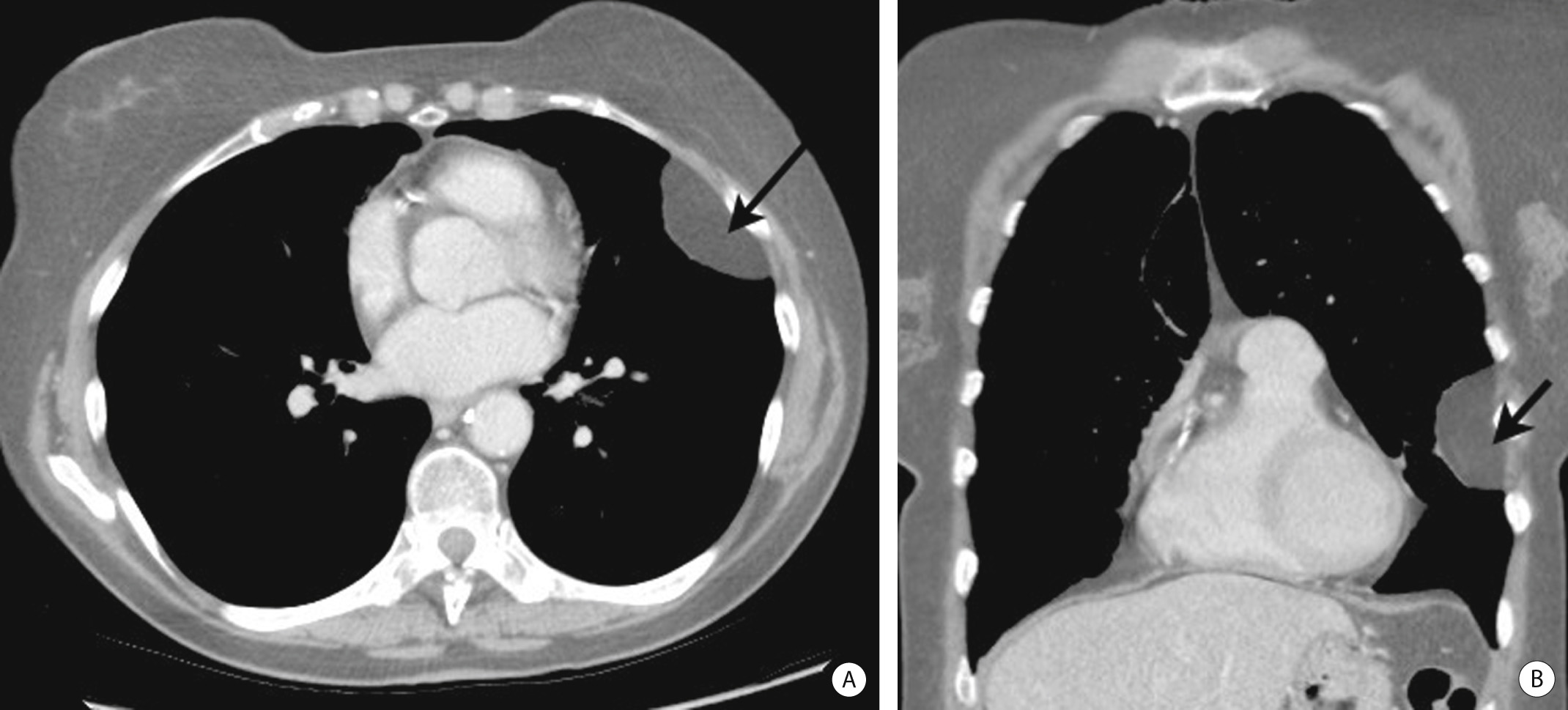
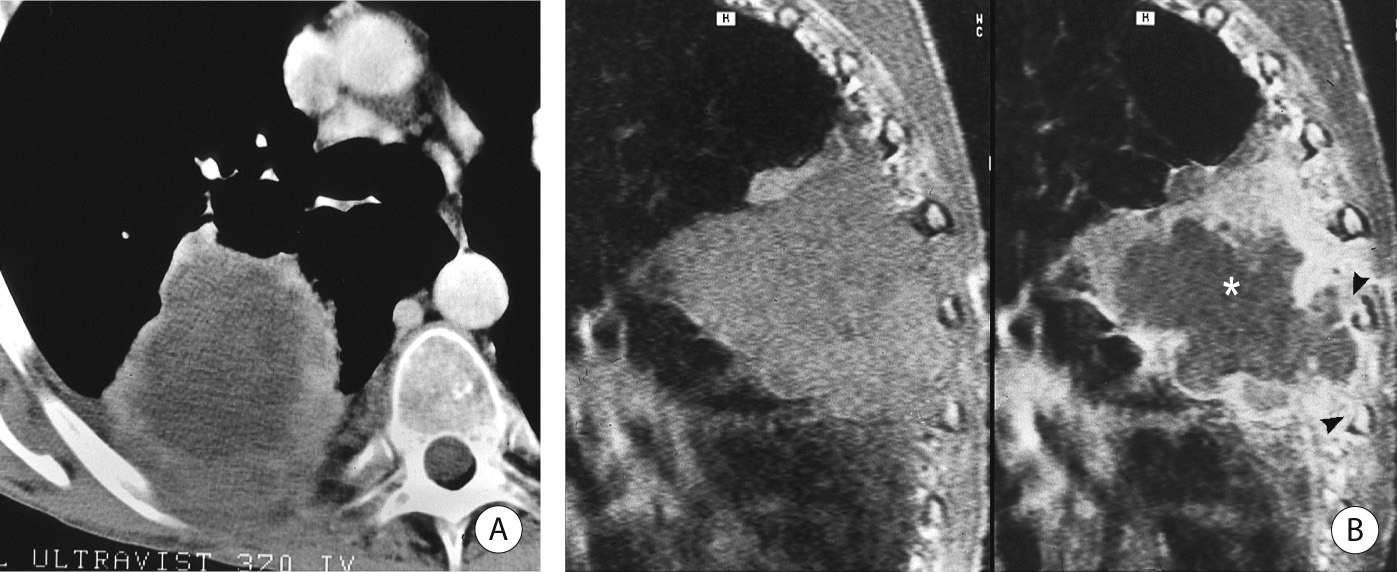
A depressed sternum resulting in the anterior ribs projecting more anteriorly than the sternum (funnel chest) ▸ it may be an isolated abnormality or associated with other disorders such as Marfan's syndrome or congenital heart disease (particularly an ASD)
The condition is best assessed on a lateral CXR ▸ PA CXR: leftward shift of the heart ▸ straightening of the left heart border with prominence of the main pulmonary artery segment ▸ an indistinct right heart border simulating middle lobe disease (the sternum replaces aerated lung at the right heart border) ▸ a steep inferior slope of the anterior ribs ▸ undue clarity of the lower dorsal spine seen through the heart
Pigeon chest (pectus carinatum): the reverse deformity, which may be congenital or acquired
Become a Clinical Tree membership for Full access and enjoy Unlimited articles
If you are a member. Log in here